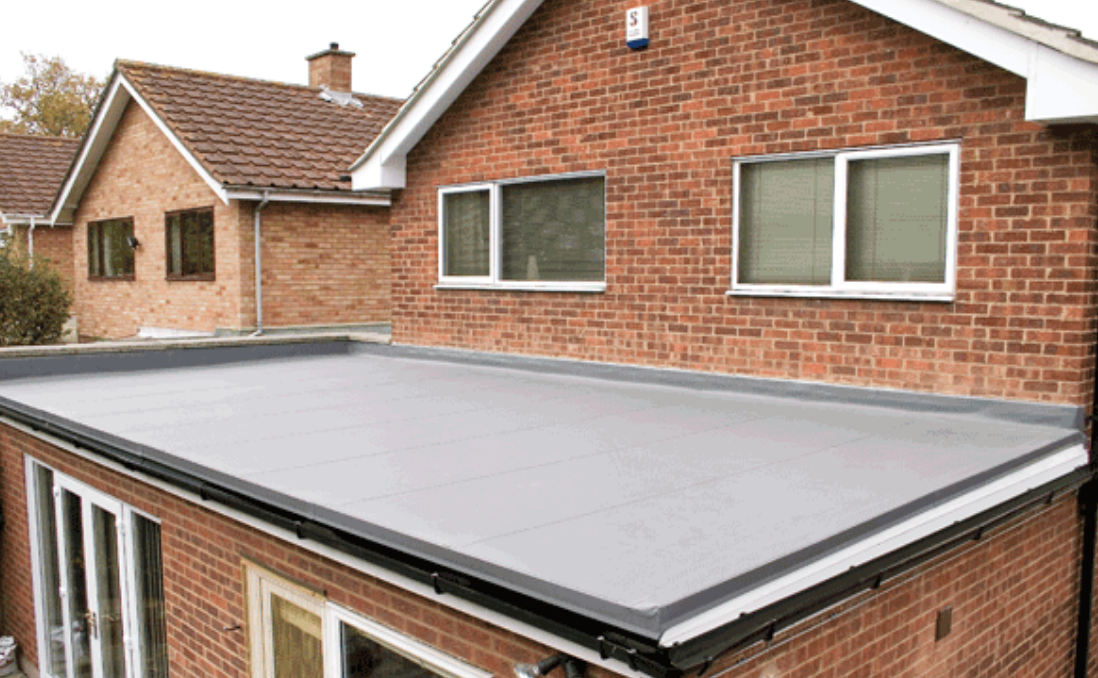The roofing industry has a wide variety of materials used for commercial roofing construction. The type of material you use is one of the most critical decisions you will make regarding your commercial roofing project. There are several things to consider before making a decision. This includes budget, location, building structure, among others.
In addition to the various roofing materials available, there are different advantages and disadvantages to each. Let’s take a look at the most common types of commercial roofs, so you can have an understanding of each before discussing your project.
Most Common Types of Commercial Roofs
Commercial roofing materials vary based on the slope of your roof. Depending on your building structure, you may have one of the following types of commercial roofs:
1. Flat Roofs
The most widely used roofing option in the commercial roofing industry is flat roofs. They are cost-effective, easy to install, and practical for commercial building applications. Flat roofs come in various materials, including rubber rolls, EPDM, TOP, PVC, bitumen, and modified bitumen. The main advantage of these materials is that they are easy to install, maintain, and repair.
Although visual aesthetic is not generally the goal of commercial roofing, flat roofing materials are available in several colors. You can easily install air conditioning units and satellite solar panels on flat roofs. The most significant disadvantage is drainage. Flat roofs tend to hold stagnant water because they lack the pitch that runs water off your roof during a storm. Therefore, you may experience deterioration, damage, and leaks if you don’t stay on top of removing built-up water.
2. Low-Sloped Roofs
Low-sloped roofs are commonly seen in business industries, complexes, apartments, warehouses, and factories. They appear to be flat but have a slight pitch. They are constructed with the same materials as flat roofs, but they allow for smooth water flow to the valley, saddle, or drains.
Not only are low-sloped roofs a cost-effective option, but they also allow safer conditions for roofers. Like flat roofs, you can easily install air conditioning units, solar panels, or satellites on low-sloped roofs. One of the biggest disadvantages of these commercial roofs is that they don’t handle snow well, so keep this in mind if you live in an area with heavy snow. They also have strict building codes compared to other roofs. Talk to your commercial roofer about code compliance before choosing this option.
3. Pitched Roofs
While pitched roofs are most commonly seen in residential buildings, they are also used on commercial properties. One of their most significant advantages is that they allow adequate water runoff. The steel structure of the roof’s base assures that water, debris, and other liquids roll off quickly.
Pitched roofs are relatively low maintenance compared to flat or low-sloped roofs. One of the disadvantages is the higher cost of repairs because of the structure of the building. Shifting materials, maneuvering around the roof to make repairs, and installation needs to follow strict safety measures, increasing the cost of repairs.
Contact Espinoza Roofing for a Free Consultation
If you are ready to discuss your commercial roofing project, Espinoza Roofing is here to help! Contact us today to schedule a free consultation with a commercial roofer in Claremont.
